Photos with this report (click to enlarge) | |||
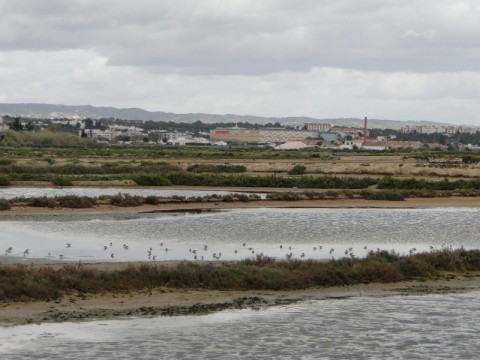 Tavira Salt-pans |
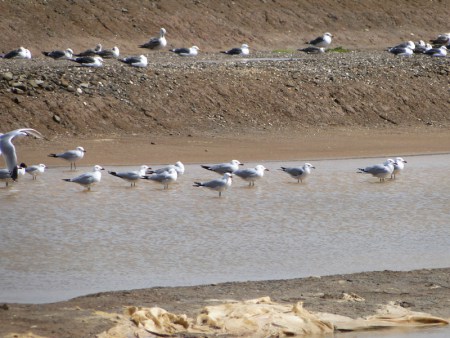 Audouin's Gulls |
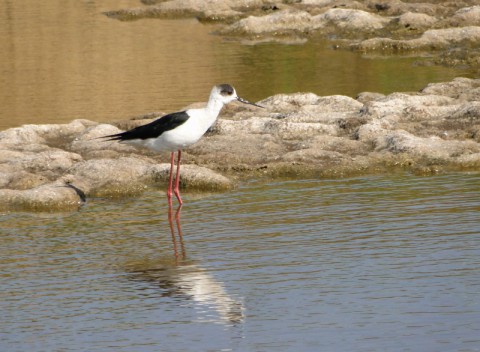 Black-winged Stilt |
|
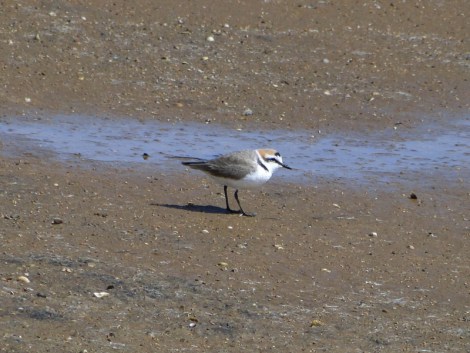 Kentish Plover |
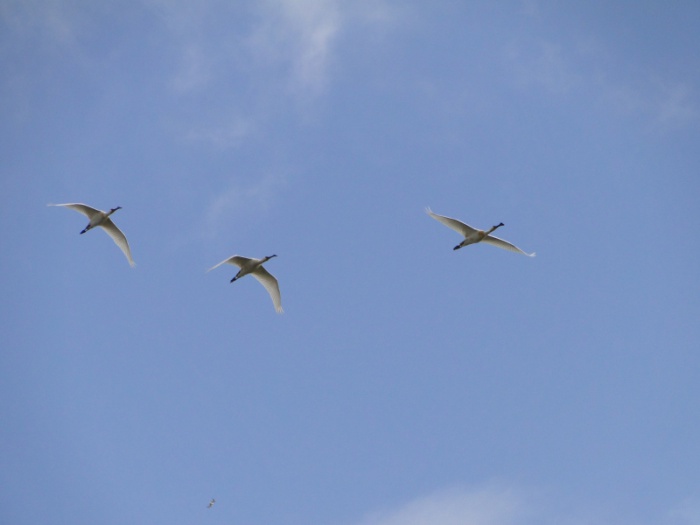 Spoonbill |
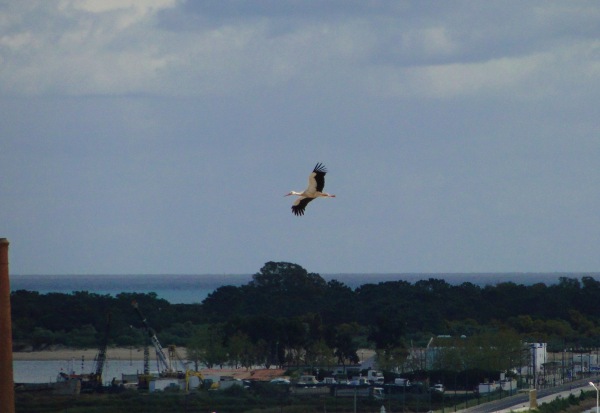 White Stork |
|
This brief report provides some notes about birding around Tavira (38km east of Faro), based on a week’s break here which my wife, Alison Rowntree, and I took from 19th-26th March 2017. Whilst this was not strictly a birding holiday, we managed to find some good birds and saw new species for the trip every day except the last one (when the weather was poor).
We booked a package deal via Travelzoo, staying at the Maria Nova Lounge Hotel, on the edge of Tavira. For my review of this see TripAdvisor (PlymouthPete19). We decided not to hire a car nor take public transport anywhere else, so did all our birding on foot from the hotel. This was no problem, as the extensive salt pans were only a short walk away and there were several other areas with different habitat to explore, nearby.
Although we were too early for peak Spring migration, we did find a range of migrants and saw 81 species during our stay (numbers given below are approximate to give an idea of different species’ abundance). Tavira is regularly visited by birders for a brief look, as part of wider trips to the Algarve. However we would also recommend it as a destination for leisurely car-less birding and to combine with a more general holiday in the pleasant town.
Key sites we visited were:-
Salt-pans: easily accessed from roads on the south side of the town. In particular, the main road to the mouth of the Gilao River (i.e. on the west side of the river) affords views from both sides and it’s easy walking on good pavements. You can also explore the salt-pans, which are particularly good for waders and gulls, from the numerous paths and tracks which transverse them. In this area we saw: White Stork (12), Spoonbill (14), Greater Flamingo* (125), Glossy Ibis (20), Curlew Sandpiper (12), Dunlin (200), Kentish Plover (20), Black-winged Stilt (30), Avocet (100), Grey Plover (20), Sanderling (20), Greenshank (6), Bar-tailed Godwit (3), Black-tailed Godwit, Ringed Plover (30), Little Stint (10), Knot (5), Redshank (30), Spotted Redshank, Ruff, Oystercatcher (6), Whimbrel (6), Common Sandpiper (12), Turnstone (20), Stone Curlew (3), Audouin’s Gull (30), Mediterranean Gull (4), Yellow-legged Gull (100), Caspian Tern, Swift (150), Hoopoe (6), Crested Lark (40), Yellow Wagtail iberiae race (20), Stonechat, Bluethroat, Fan-tailed Warbler, Sardinian Warbler (25), Western Subalpine Warbler (2 males), Chiffchaff (15), Spotless Starling (8), Corn Bunting (12), and Serin (150).
*The Flamingos were a bit “hit and miss” but the largest flock was discovered in the water works near the river mouth (assess from road on east side of river, bear right at hotel sign and view from gaps in the vegetation several hundred metres along this this road).
Ilha de Tavira: this island can be accessed from the west side of the mouth of the Gilao River via a foot ferry which was leaving every hour during our stay. In the high season, a ferry also runs from the town itself. The island has some of the biggest trees in the area and can attract migrants. Birds we saw here included Caspian Tern, several Hoopoes and Red-rumped Swallows, and a Cuckoo.
Riverside north of the town: we walked from Tavira north along the west side of the Gilao River to where the A22 crosses overhead and recorded: Booted Eagle, a few Azure-winged Magpies, Lesser Spotted Woodpecker, Red-legged Partridge (2) and Common Waxbill (12).
Road from Tavira to Santa Luzia: a km or so out of Tavira, around the orange grove “Quinta dos Sonhos” and in large evergreen trees just beyond, we found Azure-winged Magpies (12). The area also produced: Black-shouldered Kite, Great Spotted Cuckoo (2), and Red-rumped Swallow.
Species we saw from our hotel room balcony included: White Storks, Greater Flamingos, Blue Rock Thrush (2), Hoopoe, Caspian Tern, Cattle Egrets, Spotless Starlings, Fan-tailed and Sardinian Warblers. Two Pallid Swifts appeared in the town towards the end of our stay.
For further information, email - peteraley@msn.com